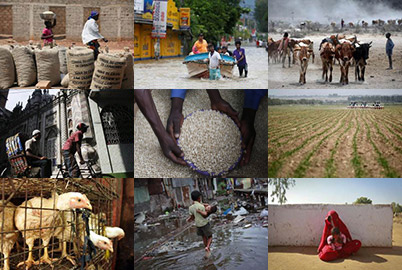The Myanmar military junta is sticking to its guns about not wanting outsiders to give out aid, and international debate is hotting up on whether the world has a duty to give relief to people in Myanmar's cyclone-hit delta even if the government rejects it.
Nonetheless, there are some good reasons why it's not as simple as just flying over and dropping aid down to desperate survivors.
Air drops are usually a last resort, because it's hard to reach the people who need aid most, especially the sick and injured. Unless there's someone to meet the aid and organise its distribution, it ends up with the ones who are most able to scramble and fight for it. That's why reputable aid agencies don't throw aid out of the back of trucks, either.
And it's the most expensive way there is of delivering food. "The lower the cost of transport, the more food we can buy," said a senior aid official who didn't want to be named.
Aid workers say that for air lifts to be effective you need staff on the ground and you need to create large, visible drop zones.
Without this, air lifts run a real risk of injuring people when they land. "There have been some injuries in the past, in chaotic situations," the aid official said.
The U.N. World Food Programme has developed the "snowflake" technique, dropping packages of high protein food that are small and light enough not to hurt anyone they might land on.
British-based aid agency Oxfam published its views on air drops in Myanmar on the U.N. website ReliefWeb, saying: "In a natural disaster such as Cyclone Nargis or conflict like Darfur it's not only food that's needed but also sophisticated equipment such as clean water and sanitation systems weighing tons as well as highly skilled staff to operate them - none of which can be dropped from the sky."
Oxfam's humanitarian director quoted in the statement, Jane Cocking, was adamant that air drops shouldn't be seen as a substitute for having specialists on the ground.
Aid agencies are keen to emphasise they wouldn't condone working in Myanmar without the government's permission.
All these reasons, plus the sheer, humiliating indignity - no one should have to fight like a zoo animal for food flung from a helicopter or a truck - make aid agencies understandably wary of air drops.
Is it better than nothing?
"If it's an emergency, and people are at risk of death, you use air lifts," the aid official said. "But you have to have staff on the ground."
Oxfam's Cocking said: "At best air-drops can only be a partial solution, at worst they give the illusion that somehow we are addressing this ever worsening humanitarian crisis."
Our Standards: The Thomson Reuters Trust Principles.

